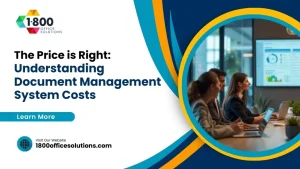ESG strategy and management: A guide for businesses
Many organizations struggle to effectively integrate an ESG strategy into their operations, often overlooking its critical role in achieving net zero emissions and addressing climate change. This blog post will outline the importance of ESG management, key components of an effective strategy, and practical steps for implementation. Readers will gain valuable insights into measuring and reporting ESG performance, helping their businesses not only comply with regulations but also enhance their reputation and operational efficiency. Engaging with this content will provide the tools needed to tackle ESG-related challenges and leverage data for informed decision-making.
Defining ESG Strategy and Its Importance for Businesses
ESG strategy, which stands for Environmental, Social, and Governance strategy, outlines how businesses address sustainable practices and stakeholder expectations. It encompasses various aspects, including reducing greenhouse gas emissions, ensuring fair employment practices, and maintaining transparency in governance. This strategic framework helps companies align their operations with wider societal goals.
Incorporating an effective ESG strategy is increasingly important for organizations seeking to manage risk and enhance their reputation. Stakeholders, including investors and customers, are placing higher importance on sustainable business practices. Companies demonstrating commitment to ESG principles can mitigate potential risks associated with environmental regulations and social unrest.
Furthermore, businesses that prioritize ESG considerations often experience greater employee satisfaction and engagement. An emphasis on ethical employment practices not only attracts talent but also fosters a positive workplace culture. This, in turn, reflects positively on the company’s overall performance and profitability.
Access to reliable information regarding ESG metrics is crucial for organizations looking to improve their sustainability practices. By leveraging data on various factors, such as greenhouse gas emissions and social impact, companies can make informed decisions. This data-driven approach enhances transparency and accountability, reinforcing stakeholder trust and commitment.
Key Components of an Effective ESG Strategy
An effective ESG strategy must incorporate several key components to drive sustainability and accountability. Environmental considerations focus on minimizing climate change impacts and promoting renewable energy use. Social responsibility emphasizes ethical practices that positively affect community relations and employee satisfaction. Governance structures and best practices ensure transparency and robust accounting, enabling companies to achieve their sustainability goals.
Environmental Considerations in ESG
Environmental considerations play a significant role in shaping an effective ESG strategy for businesses that aim for sustainability. By developing comprehensive policies focused on reducing carbon footprints and promoting sustainable development, organizations not only enhance their reputation but also align with global efforts to combat climate change. Engaging in risk management practices that assess environmental impacts allows businesses to proactively address potential challenges, ensuring compliance with current regulations while fostering trust among stakeholders.
Additionally, the integration of governance in environmental strategies is crucial for transparent reporting and accountability. Companies that implement rigorous policies related to environmental performance can better track their progress and communicate outcomes to investors and customers. This open approach not only demonstrates commitment to sustainability but also positions businesses to adapt to evolving societal expectations, ultimately driving long-term success.
Social Responsibility and Its Business Impact
Social responsibility is a fundamental aspect of an effective ESG strategy, significantly impacting businesses in the realm of supply chain management. Organizations that prioritize ethical practices throughout their supply chain not only comply with existing regulations but also foster positive relationships with stakeholders. For instance, a company that ensures fair labor practices among its suppliers can mitigate reputational risks and enhance its attractiveness to investors seeking responsible investment opportunities.
The link between social responsibility and regulatory compliance is increasingly evident as governments worldwide introduce stricter regulations regarding corporate conduct. Companies that actively engage in social initiatives, such as community development and sustainable resource management, position themselves favorably in the eyes of regulators. By demonstrating accountability in these areas, organizations can not only navigate compliance challenges more effectively but also creatively leverage their commitment to social responsibility to enhance their overall brand image and attract long-term investments.
Governance Structure and Best Practices
Establishing a robust governance structure is fundamental for organizations aiming to enhance their reputation through effective ESG strategy management. By integrating sustainability accounting into corporate policies, companies can ensure transparency and strengthen accountability. Utilizing analytics to monitor and report on corporate social responsibility initiatives allows businesses to communicate their efforts clearly to stakeholders, fostering trust and confidence in their long-term sustainability goals.
Best practices in governance also involve adopting carbon accounting methods to evaluate environmental impact comprehensively. Organizations that implement rigorous governance frameworks can better prepare for regulatory changes while demonstrating a commitment to responsible business practices. This proactive approach not only drives compliance but also attracts socially conscious investors who prioritize sustainable operations in their investment decisions.
Steps to Develop a Robust ESG Strategy
Developing a robust ESG strategy involves several key steps that enable businesses to effectively integrate sustainability into their operations. Conducting an ESG assessment provides a foundational understanding of current practices, while setting clear ESG goals and objectives aligns corporate strategies with sustainability accounting standards board criteria. Engaging stakeholders throughout this process ensures that diverse perspectives are considered, fostering comprehensive sustainability reporting that enhances the overall value chain.
Conducting an ESG Assessment
Conducting an ESG assessment is a critical initial step for businesses aiming to develop a robust ESG strategy. This process helps identify current practices and areas for improvement related to greenhouse gas emissions and carbon footprint management. By leveraging technology, companies can accurately analyze their sustainability data, ensuring that their efforts align with the goals of becoming a more sustainable business and enhancing their brand reputation.
An effective ESG assessment involves gathering data on various operational aspects, including energy consumption and waste management practices. By evaluating their performance in these areas, organizations gain insights that inform strategic planning and help address potential stakeholder concerns. This proactive approach not only fosters transparency but also positions the company as a leader in sustainability initiatives, thereby attracting ethically-minded investors and customers.
Setting Clear ESG Goals and Objectives
Setting clear ESG goals and objectives allows businesses to align their operations with global standards, such as those outlined by the United Nations for sustainable development. These goals should encompass specific targets, such as reducing carbon emissions and improving biodiversity through sustainable practices. By clearly defining these objectives, organizations can provide transparency in their efforts, reassuring customers and stakeholders that they are committed to meaningful change.
To develop effective ESG objectives, companies must engage in stakeholder dialogues to understand their concerns and expectations better. For instance, consulting with customers can reveal insights into their values and preferences, helping organizations refine their sustainability strategies. This collaborative approach fosters a culture of accountability, ensuring that commitments to carbon reduction and biodiversity enhancement are not merely aspirational but are actionable and measurable moving forward:
- Engage stakeholders for insights
- Establish clear, measurable targets
- Ensure alignment with global sustainability standards
Engaging Stakeholders in the Process
Engaging stakeholders is a fundamental aspect of developing a robust ESG strategy. By actively involving various parties, including employees, suppliers, and customers, companies can gain insights into their perspectives on critical issues such as waste management and occupational safety and health. This collaborative process not only enhances employee engagement but also fosters a shared commitment to sustainability objectives that align with broader initiatives, such as those established by the European Union for environmental protection.
To maximize the benefits of stakeholder engagement, organizations should implement ongoing dialogues to assess and address concerns related to their operations. Feedback from stakeholders can provide valuable information that guides decision-making and promotes prosperity within the community. Implementing structured methods, such as surveys and focus groups, allows companies to effectively capture stakeholder sentiments and integrate them into their ESG practices, ensuring accountability and support for the company’s initiatives moving forward:
- Engage stakeholders for insights
- Establish a shared understanding of ESG goals
- Promote ongoing dialogue and collaboration
Implementing and Managing ESG Initiatives
Assigning responsibilities and resources is central to effectively implementing and managing ESG initiatives, allowing organizations to drive their sustainability efforts systematically. Integrating ESG considerations into daily operations enhances overall efficiency and can create a competitive advantage. Continuous monitoring and adaptation will ensure that ESG goals align with financial performance, resource management, and electricity consumption for maximum value delivery.
Assigning Responsibilities and Resources
Assigning responsibilities and resources is critical to successfully implementing ESG initiatives within an organization. Effective leadership involves the board of directors actively overseeing ESG efforts, ensuring alignment with corporate governance principles. By dedicating teams and budgets to key areas such as energy conservation, companies can stimulate sustainable practices that resonate with consumers and improve the overall brand image.
Clear accountability structures should be established to support ESG goals, as this promotes transparency and encourages employee engagement. For instance, appointing sustainability officers or committees can facilitate focused efforts in meeting specific objectives. By integrating ESG responsibilities into everyday operations, organizations not only enhance compliance but also build a culture that prioritizes ethical conduct and responsible resource management:
Integrating ESG Into Business Operations
Integrating ESG into business operations requires a comprehensive approach that addresses environmental issues and promotes innovation within the organization. By incorporating sustainable practices into daily functions, companies can significantly reduce greenhouse gas emissions while also enhancing their competitive stance in the market. For example, businesses that utilize energy-efficient systems and renewable resources not only comply with regulatory standards but also resonate positively with society, aligning their operations with modern consumer values and expectations.
The role of insurance in this integration cannot be overlooked, as organizations can leverage ESG principles to build more resilient operations. By adopting sustainable risk management strategies, companies can protect themselves from potential liabilities associated with environmental damages and social governance failures. This proactive stance not only strengthens overall operational integrity but also fosters trust among stakeholders, ultimately leading to long-term success and stability in the marketplace.
Continuous Monitoring and Adaptation
Continuous monitoring and adaptation are essential components of an effective ESG strategy. By regularly assessing key metrics related to waste management and recycling initiatives, businesses can significantly improve their operational health and contribute positively to the economy. This ongoing analysis helps organizations identify areas for improvement in their ethical practices, ensuring that they remain compliant with evolving regulations and stakeholder expectations.
To remain competitive, companies must be agile in response to the results of their ESG assessments. For instance, integrating feedback from employees and customers about waste management efforts can help refine strategies and promote ethical consumption. Organizations that embrace this proactive approach not only enhance their reputation but also cultivate a culture of sustainability that resonates with both employees and consumers, ultimately driving long-term success.
Measuring and Reporting ESG Performance
Measuring and reporting ESG performance involves several critical components that contribute to an effective strategy. Key Performance Indicators (KPIs) help assess workforce engagement and recruitment practices, while adherence to reporting standards, including the United Nations Global Compact, ensures transparency. Best practices foster a culture of accountability, emphasizing the importance of integrating a circular economy in reporting efforts.
Key Performance Indicators for ESG
Key Performance Indicators (KPIs) for ESG are essential for businesses to assess their materiality and measure effectiveness in project management. These indicators help organizations identify risks related to environmental, social, and governance practices while ensuring efficient resource allocation. By tracking metrics such as emissions reductions and diversity hiring rates, companies can enhance accountability and demonstrate their commitment to shareholders who increasingly value sustainability.
Incorporating a robust risk assessment framework that evaluates ESG performance is critical for long-term success. Businesses should utilize KPIs not just to monitor current performance but also to forecast potential risks associated with their operations. This proactive approach allows organizations to adapt their strategies effectively, aligning with market expectations and fostering a resilient business model:
Reporting Standards and Best Practices
Establishing reporting standards and best practices is essential for businesses aiming to accurately convey their ESG performance. Companies should align their reporting efforts with recognized frameworks, such as the Global Reporting Initiative or the Sustainability Accounting Standards Board, which emphasize transparency in areas like water usage and equity in resource distribution. By adhering to these standards, organizations can demonstrate their commitment to sustainable practices and foster trust among investors and stakeholders.
Implementing effective reporting mechanisms requires a comprehensive understanding of the ESG metrics that matter most to stakeholders. For instance, organizations can enhance their asset management by integrating educational initiatives that raise awareness of environmental impacts, including water conservation strategies. Utilizing clear and concise advertising about ESG performance not only promotes accountability but also helps businesses attract socially conscious consumers and investors who prioritize responsible practices.
Transparency and Accountability to Stakeholders
Transparency and accountability to stakeholders are critical components of an effective ESG strategy, especially concerning executive compensation and climate risk management. Companies must demonstrate how their executive compensation structures align with long-term sustainability goals, ensuring that decision-makers are incentivized to address the effects of climate change effectively. This alignment not only reinforces accountability but also enhances trust among stakeholders who increasingly demand responsible corporate governance.
Utilizing software solutions that facilitate clear data reporting plays a pivotal role in achieving transparency. These tools enable organizations to track their ESG metrics, monitor data security, and report on their climate-related initiatives comprehensively. By providing stakeholders with accurate and accessible information about the company’s environmental impact and governance practices, businesses can foster greater engagement and support for their sustainability efforts:
- Align executive compensation with sustainability goals.
- Utilize software for transparent data reporting.
- Enhance trust among stakeholders through accountability.
The Future of ESG Strategy in Business
Emerging trends in ESG management emphasize the importance of aligning business models with sustainable development goals. The role of technology in ESG integration is becoming critical, facilitating better procurement practices and data collection. Concurrently, navigating regulatory changes in ESG reporting frameworks ensures that organizations remain compliant while enhancing transparency and accountability in their sustainability efforts.
Emerging Trends in ESG Management
Emerging trends in ESG management highlight the increasing importance of stakeholder engagement and data collection in shaping effective strategies. Companies are actively seeking insights to understand stakeholder expectations regarding environmental initiatives, driving them to enhance their sustainability practices. This shift not only addresses compliance requirements but also fosters stronger relationships with customers who value transparency and corporate responsibility.
Organizations are now leveraging advanced data collection techniques to track progress toward their ESG goals more effectively. With technology playing a pivotal role, businesses can analyze environmental impacts in real-time and align their operations with sustainability benchmarks. This proactive approach not only aids in meeting regulatory standards but also positions companies as leaders in responsible business practices, ultimately enhancing their reputational capital and fostering long-term growth.
The Role of Technology in ESG Integration
Technology plays a crucial role in the integration of Environmental, Social, and Governance (ESG) strategies within businesses, particularly for firms operating in regulatory environments such as the United Kingdom. Organizations can leverage advanced data analytics and software solutions to monitor compliance with ESG-related laws, ensuring that their strategic planning aligns with evolving regulations. For instance, by utilizing tools developed by firms like PwC, businesses can enhance their reporting transparency and accountability, mitigating the risk of accusations such as greenwashing, which can damage reputations and stakeholder trust.
Furthermore, as companies prioritize ESG initiatives, technology facilitates real-time data collection and analysis, allowing for more informed decision-making. Implementing innovative solutions not only helps in tracking performance against set sustainability targets but also supports organizations in identifying areas for improvement. This proactive approach encourages businesses to communicate their commitments effectively, fostering a culture of superiority and ensuring alignment with stakeholder expectations across the spectrum of environmental impact, social responsibility, and governance practices.
Organizations must stay vigilant in navigating regulatory changes in ESG reporting, particularly as the landscape evolves to prioritize socially responsible investing. Keeping abreast of guidelines set forth by the International Sustainability Standards Board is essential for companies aiming to enhance transparency and build stakeholder trust. Utilizing innovative software as a service (SaaS) solutions can streamline compliance processes, enabling businesses to efficiently track and report on their ESG metrics, ultimately driving growth in revenue.
Proactively researching regulatory developments will empower businesses to adapt to new reporting demands before they become mandatory. This forward-thinking approach allows organizations to position themselves as leaders in sustainable practices, attracting investors who prioritize accountability and responsible governance. As firms embrace these changes, they enhance their reputation while ensuring alignment with international standards, presenting a clear advantage in a competitive market.
Frequently Asked Questions
What is ESG strategy and why is it important for businesses?
An ESG strategy focuses on environmental, social, and governance factors that influence a company’s operations. Businesses implement this strategy to ensure sustainable practices, promote social responsibility, and enhance corporate governance, thereby improving their overall reputation and stakeholder trust.
The importance of ESG lies in its ability to drive long-term value creation. Companies with robust ESG strategies often experience better financial performance and risk management. This approach also attracts socially conscious investors, enhancing capital access and fostering competitive advantage in the market.
What are the key components of an effective ESG strategy?
An effective ESG strategy integrates environmental, social, and governance objectives into business operations. Key components include stakeholder engagement, transparent reporting, and compliance with regulations. Emphasizing sustainability and ethical practices fosters trust and enhances a company’s reputation among clients and partners.
Additionally, measurable goals and performance tracking are crucial. Establishing benchmarks allows organizations to assess their impact and drive continuous improvement. Prioritizing diversity, equity, and community involvement further strengthens the social dimension of an ESG strategy, creating long-term value for both the business and society.
What steps are necessary to develop a robust ESG strategy?
To develop a robust ESG strategy, organizations should first conduct a thorough assessment of their current practices. This includes identifying key environmental, social, and governance issues relevant to their operations. Engaging stakeholders is crucial, ensuring diverse perspectives inform strategy development.
Next, establish clear objectives and metrics to evaluate progress. Integrating ESG factors into business operations enhances transparency and accountability. Regular reporting and updates will foster investor confidence and strengthen the commitment to sustainable practices, driving long-term value creation for the organization and its stakeholders.
How can businesses implement and manage ESG initiatives effectively?
Businesses can implement effective ESG initiatives by setting clear goals aligned with their mission. This involves identifying key areas such as environmental impact, social responsibility, and corporate governance. Regular assessments and transparent reporting enhance accountability and stakeholder trust.
Management of ESG initiatives requires continuous engagement with stakeholders and employees. Establishing a framework that includes training, monitoring, and feedback mechanisms ensures alignment. Utilizing technology, such as data analytics, can streamline reporting and improve decision-making related to sustainability efforts.
How do companies measure and report ESG performance?
Companies assess and report ESG performance through a structured approach, often utilizing frameworks like GRI, SASB, or TCFD. They measure factors such as carbon emissions, waste management, and labor practices to evaluate their impact on the environment and society, enhancing accountability and transparency.
Data collection methods include surveys, interviews, and analytics, which aid in quantifying ESG metrics. Many organizations publish annual sustainability reports, reflecting their progress and initiatives. This process not only engages stakeholders but also aligns business strategies with corporate governance principles, fostering trust and resilience in the market.
Conclusion
A robust ESG strategy is vital for businesses aiming to enhance their sustainability and reputation while effectively managing risks. By prioritizing environmental, social, and governance considerations, organizations can attract ethically-conscious investors and foster positive stakeholder relationships. Continuous assessment and adaptation, along with clear goals, empower companies to navigate regulatory landscapes and meet evolving societal expectations. Ultimately, integrating a comprehensive ESG approach not only drives compliance but also positions businesses for long-term growth and success in a competitive market.











